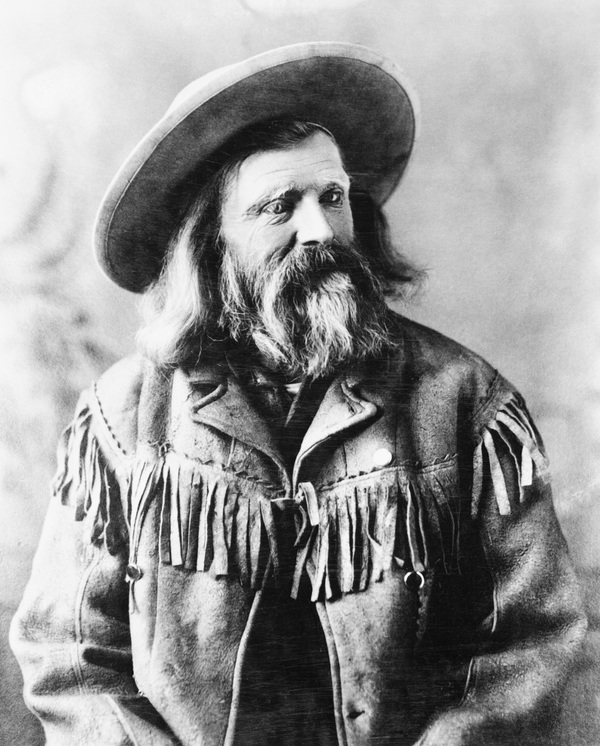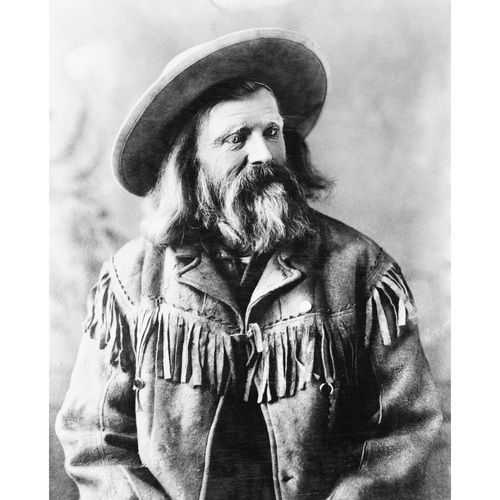
Source: Link
LIVINGSTON, SAMUEL HENRY HARKWOOD, prospector, trader, and farmer; b. 4 Feb. 1831 in Avoca (Ovoca, Republic of Ireland), son of Hugh Leviston and Mary Ann Fitzsimmins; m. 1865 in Victoria (Pakan, Alta) Jane Mary Howse, granddaughter of Joseph Howse*, and they had eight sons and six daughters; d. 4 Oct. 1897 in Calgary.
At an early age, probably in 1848, Samuel Henry Harkwood Livingston left Ireland for the United States with his cousin Hugh Livingston, and in 1850 he reached the gold-fields of California. In the early 1860s he travelled and prospected in the Washington Territory (in the areas that are now Idaho and Montana) and southern British Columbia. By 1865 he was panning for gold along the North Saskatchewan River near Fort Edmonton (Edmonton).
Married in 1865, Livingston adopted a more settled way of life and established a business trading for buffalo skins. By 1874 he had relocated his operations southward to be closer to the trade with the plains Indians and was doing business near the Roman Catholic mission, Our Lady of Peace, on the Elbow River. In the summer of 1876 Livingston moved with his family closer to Fort Calgary (Calgary), the newly established North-West Mounted Police post on the river. Here, in 1876, he began cultivation and with John Glenn* was one of the first farmers in the area.
The Livingston farm prospered. Becoming an example of the region’s agricultural potential, it was shown to visiting notables such as the Marquess of Lorne [Campbell*] and Alexander Mackenzie, and was used in publicity to attract prospective settlers. In the late 1860s Livingston had already begun to pioneer the agricultural development of the west by bringing the first pigs into the Saskatchewan country. In 1882 he brought the first threshing machine into the region, the following year he introduced the first binder, and in 1886 he imported 350 fruit trees from Minnesota. Livingston is also credited with pioneering the cultivation of different types of grass and the raising of cattle.
Livingston was a founding director of the Calgary District Agricultural Society in 1884 and accompanied the society’s exhibit of grain and vegetables to the Toronto Industrial Exhibition. A striking figure with his untamed beard and long, grizzled fair hair, his fringed buckskin jacket, wide-brimmed hat, and bright handkerchief, he undoubtedly attracted attention. As a squatter, like most early settlers, he was anxious to obtain legal title to his land. Title was one of the issues behind the Alberta Settlers Rights Association, organized in 1885 by Livingston and Glenn. Livingston was eventually granted a patent for his land in February 1891.
Livingston’s commitment to agriculture did not prevent him from pursuing his early passion for prospecting, and in 1894 he made a gold strike on the South Saskatchewan River near Medicine Hat (Alta). He was also involved in community affairs, serving as founding director of the Calgary branch of the Canadian North-West Territories Stock Association in 1886, as one of the original trustees of the Glenmore School in 1888, and as a delegate to a Conservative party convention in 1896.
Sam Livingston died suddenly in Calgary on 4 Oct. 1897 and the following year the freemasons erected a monument at his grave. A forceful and colourful personality, he was a legend during his lifetime and is regarded as one of Calgary’s most remarkable pioneers.
Glenbow Arch., M680–82; M3036; M3658; M4046; M4821; M5782; R19e; S. S. J. file. Land Titles Office (Calgary), 1891, 1898, 1900. Calgary District Agricultural Soc., District of Alberta: information for intending settlers (Ottawa, 1884). James Gibbons, “The narrative of James Gibbons (part 1),” ed. W. A. Griesbach, Alta. Hist. Rev., 6 (1958), no.3: 1–6. Calgary Herald, 1883–98. Calgary Tribune, April 1886, 1 April 1887. “Chronology of farming in the Okotoks–High River area, 1879–1910,” comp. R. L. Fowler, Leaves from the medicine tree . . . (Lethbridge, Alta., 1960), 294–98. Katherine Hughes, Father Lacombe, the black-robe voyageur (Toronto, 1911), 128,–30. J. [C.] McDougall, On western trails in the early seventies: frontier pioneer life in the Canadian north-west (Toronto, 1911). Grant MacEwan, Calgary cavalcade from fort to fortune (Saskatoon, 1975); Fifty mighty men (5th ed., Saskatoon, 1975). “Round table of old timers,” Edmonton Bulletin, 25 Dec. 1907: 2, 4.
Cite This Article
Sheilagh S. Jameson, “LIVINGSTON, SAMUEL HENRY HARKWOOD,” in Dictionary of Canadian Biography, vol. 12, University of Toronto/Université Laval, 2003–, accessed April 30, 2025, https://www.biographi.ca/en/bio/livingston_samuel_henry_harkwood_12E.html.
The citation above shows the format for footnotes and endnotes according to the Chicago manual of style (16th edition). Information to be used in other citation formats:
| Permalink: | https://www.biographi.ca/en/bio/livingston_samuel_henry_harkwood_12E.html |
| Author of Article: | Sheilagh S. Jameson |
| Title of Article: | LIVINGSTON, SAMUEL HENRY HARKWOOD |
| Publication Name: | Dictionary of Canadian Biography, vol. 12 |
| Publisher: | University of Toronto/Université Laval |
| Year of revision: | 1990 |
| Access Date: | April 30, 2025 |



